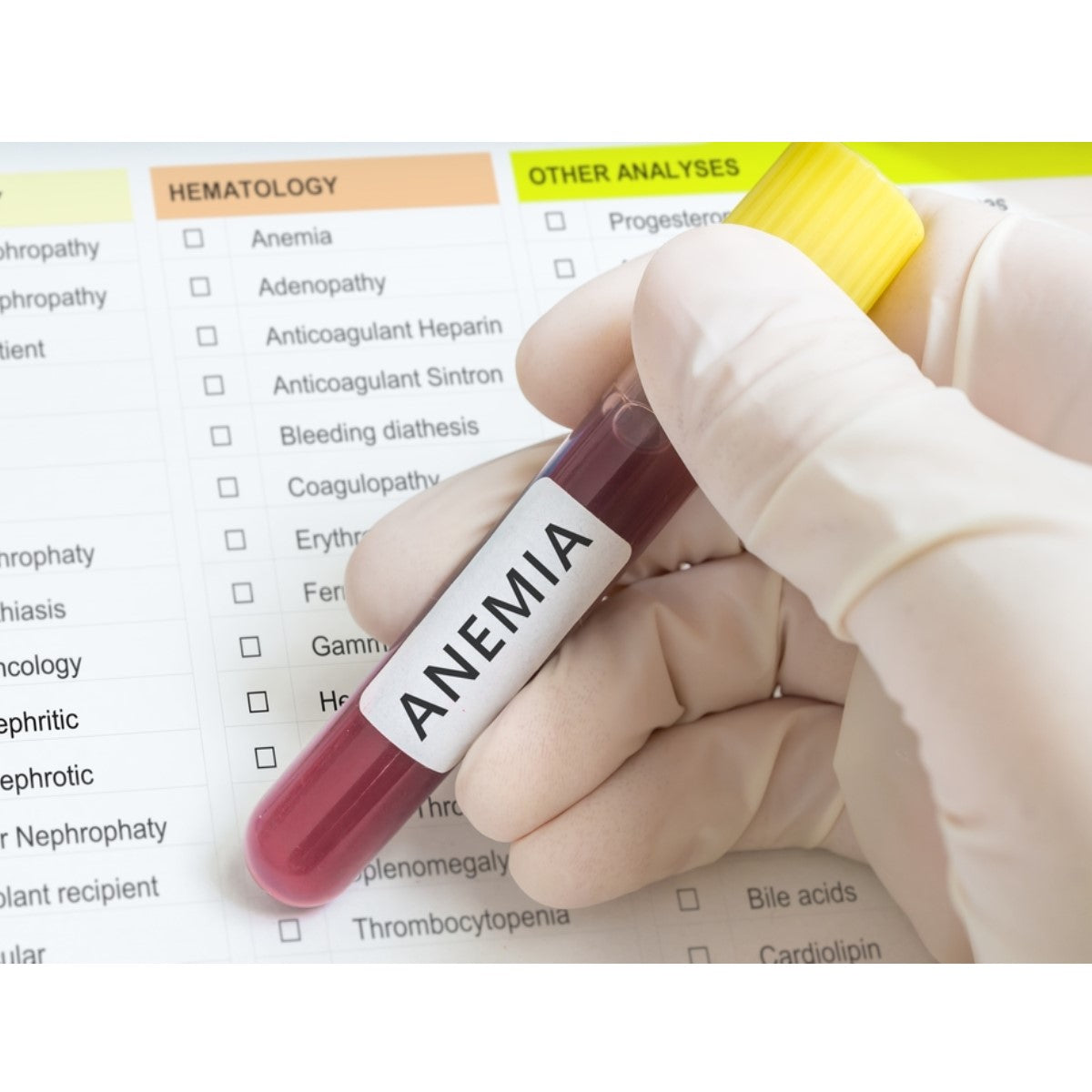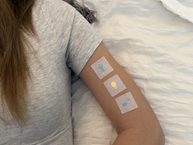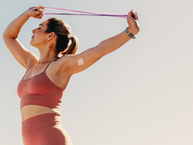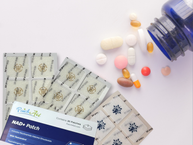Iron deficiency is the most common mineral deficiency in the world, and it is not fun to have anemia! It can make you tired and put you at risk for infections, but there are steps you can take to lower your risk. Here is what you should know about anemia and how to prevent it. Be sure to check with your healthcare provider if you have health concerns or before taking any type of dietary supplement.
Six Ways to Prevent Anemia
These are some ways to prevent anemia or to detect it early so you can treat it before it becomes too severe.
Know your risk.
Some people are at higher risk for anemia than others. You may be at higher risk for iron deficiency if any of the following describe you.
- You are a bariatric surgery patient.
- You are pregnant.
- You are a female of child-bearing age.
- You donate blood often.
- You have a bleeding disorder.
- You are an athlete who trains intensely.
- You are an adolescent who is growing rapidly.
- You follow a vegetarian or vegan, or strict plant-based, diet.
- You follow a restricted diet.
Know the symptoms.
If you know the symptoms of anemia, you can try to detect it earlier and address it. Iron is necessary for a strong immune system and for healthy red blood cells that carry oxygen to the cells in your body. This allows for proper metabolism and feeling of energy. Many of the symptoms of anemia are related to these functions.
These are some common symptoms of anemia.
- Feeling tired or lethargic
- Muscle weakness
- Experiencing cold hands and feet
- Noticing brittle nails
- Getting infections more often than you would normally expect
- Having cravings for items that are not nutritive, such as dirt, starch, or ice
- Having pale or clammy skin
- Feeling lightheaded or dizzy
If you notice these symptoms, be sure to talk to your healthcare provider. It will be good to get tested for iron deficiency. You might also ask about taking an iron supplement to get your levels back up. The Simply Iron Patch by PatchAid is high in iron and is easy to use.*
Get tested regularly.
It is easy to test for anemia. Your healthcare provider can order simple blood tests that look at factors such as how much hemoglobin you have, as well as how healthy or normal your blood cells look. You do not have to fast for these tests, and they can be done at regular labs.
Your healthcare provider may be checking for these anyway as part of your regular panel of blood tests. Just ask if you are not sure.
Eat an iron-rich diet.
A frontline strategy against iron-deficiency anemia is to eat a diet that is rich in iron. There are many food sources of iron. Some are animal-based, such as meat and seafood. Others are plant-based. Many grains are fortified with iron in the United States.
Foods that are sources of iron include the following.
- Liver
- Beef
- Chicken
- Shellfish
- Egg yolks
- Milk
- Beans and lentils
- Potatoes
- Raisins
- Leafy green vegetables, such as spinach, kale, and collard greens
- Fortified cereals and other fortified grains
Consume vitamin C.
Heme iron is only found naturally in animal-based foods, such as beef. Non-heme iron is found in plant-based foods as well as animal-based foods. Non-heme iron is less absorbable. Vitamin C helps your body absorb non-heme iron. Vitamin C tends to be in fresh fruits and vegetables and their juices.
These are some common sources of vitamin C.
- Bell peppers
- Onions
- Tomatoes
- Kiwi
- Citrus fruit and juices, such as orange, grapefruit, and tangerine
- Cantaloupe
- Strawberries
- Leafy green vegetables
- Potatoes
It can be helpful to consume some vitamin C when you eat your non-heme iron foods.
Use an iron patch.
An iron supplement can help prevent anemia.* If you already have anemia, taking a supplement is the best way to overcome it, since getting iron from food may not be enough. There are oral supplements available, such as capsules and liquids, but the Simply Iron Patch by PatchAid is different.
The Simply Iron Patch by PatchAid is a topical patch that contains iron and vitamin C. With the patch, you do not have to swallow oral supplements. That can be important not only if you don’t like swallowing pills, but also because iron can interfere with calcium absorption when you fake it by mouth. That is not an issue with the Simply Iron Patch by PatchAid.
Another benefit of the Simply Iron Patch compared to an oral supplement is that iron pills are famous for causing unpleasant side effects like constipation. With a topical patch, there is no gastrointestinal discomfort related to digestion, since the nutrients are absorbed through the skin.
The Simply Iron Patch by PatchAid has 50 mg of iron from organic curry. That is 278% of the daily value for iron. It also has 90 mg of vitamin C, which is 100% of the daily value. Vitamin C increases iron absorption and supports the immune system.*
The Simply Iron Patch by PatchAid may have these effects.
- Help maintain normal iron levels in the body.*
- Support the production of healthy red blood cells.*
- Promote a normal immune response in the body.*
- Reduce oxidative damage in cells due to harmful free radicals.*
To use the Simply Iron Patch by PatchAid, just peel off the backing and stick the patch onto a clean, hairless area of skin. Take it off 8 hours later. That’s it!
Iron-deficiency anemia is common, but it is generally preventable and treatable. Know the symptoms, eat healthy, and consider an iron supplement such as the Simply Iron Patch by PatchAid, and you may be able to lower your risk for anemia.* Check with your doctor about health concerns and also ask whether the Simply Iron Patch by PatchAid may be right for you.
*The Food and Drug Administration has not evaluated these statements. PatchAid patches are not intended to diagnose, treat, cure or prevent any disease. Anyone with a medical condition should seek the advice of a licensed medical practitioner. Individual results may vary.







